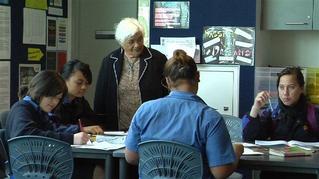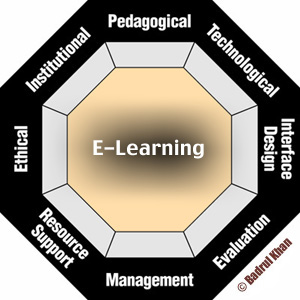In reply to the questions –
1. lack of “buy in” in the area of foundation learning by workplace providers.
According to the Journal of Open, Flexible and Distance Learning it states, “Only a few tertiary education organisations or workplaces in New Zealand have fully developed e-learning programmes for adults” (p. 18). Although “ e-learning programmes can transcend the barriers of geographic location and time” (p. 22) access still not available to all because of funding. Lankshear & Knobel (2003) state it “needs to be addressed and used to address the interfaces that occur between literacy learning and technology”.
2. Learners in supervisory roles where computer usage is expected, get computer training.
This is a bias decision made by workplace probably because less time is needed for guidance when training supervisors and thinking that they have not got time to train others who have not been exposed to technology.
3. Learners not in supervisory roles are placed in classrooms with no use of computer resources.
Effective professional development can affect the learning culture within an organization and with reference to Timperley, Wilson and Fung (2007), Professional Development (PD) programmes may occur over long periods of time therefore having large investments of time and capital. “Staff need to be counseled, mentored and tutored in situated context”. (Fletcher, J., Nicholas, K., & Davis, N. 2010). The fact that the tutors have not undergone PD, or that there is no time to train the learners, might be the problem with access and why learners are in classrooms with no use of computer resources.
4. TEC assessments as non-adaptive versions rather than online.
Surprisingly having read Journal of Open, Flexible and Distance Learning, 15(1), they speak about supporting adults to address their own learning and with reference to page 20, there are no comments on forms of assessment , whether online or non- adaptive versions, yet on page 24 they speak about “drag and drop” form of assessment.
5. Workplace LLN is a tightrope of balancing learner, provider and workplace expectations.
“Introducing and integrating e-learning into adult education and training is a complex process” (p. 25).
References:
Fletcher, J., Nicholas, K., & Davis, N. (2010). Supporting adults to address their literacy needs using e-learning. Journal of Open, Flexible and Distance Learning, 15(1), 17-29.
Lankshear, C., & Knobel, K. (2003). New literacies: Changing knowledge and classroom learning. Buckingham, UK: Open university.
Timperley, H., Wilson, A., Barrar, H., & Fung, I. (2007). Teacher professional learning and development. Wellington: Ministry of Education.

